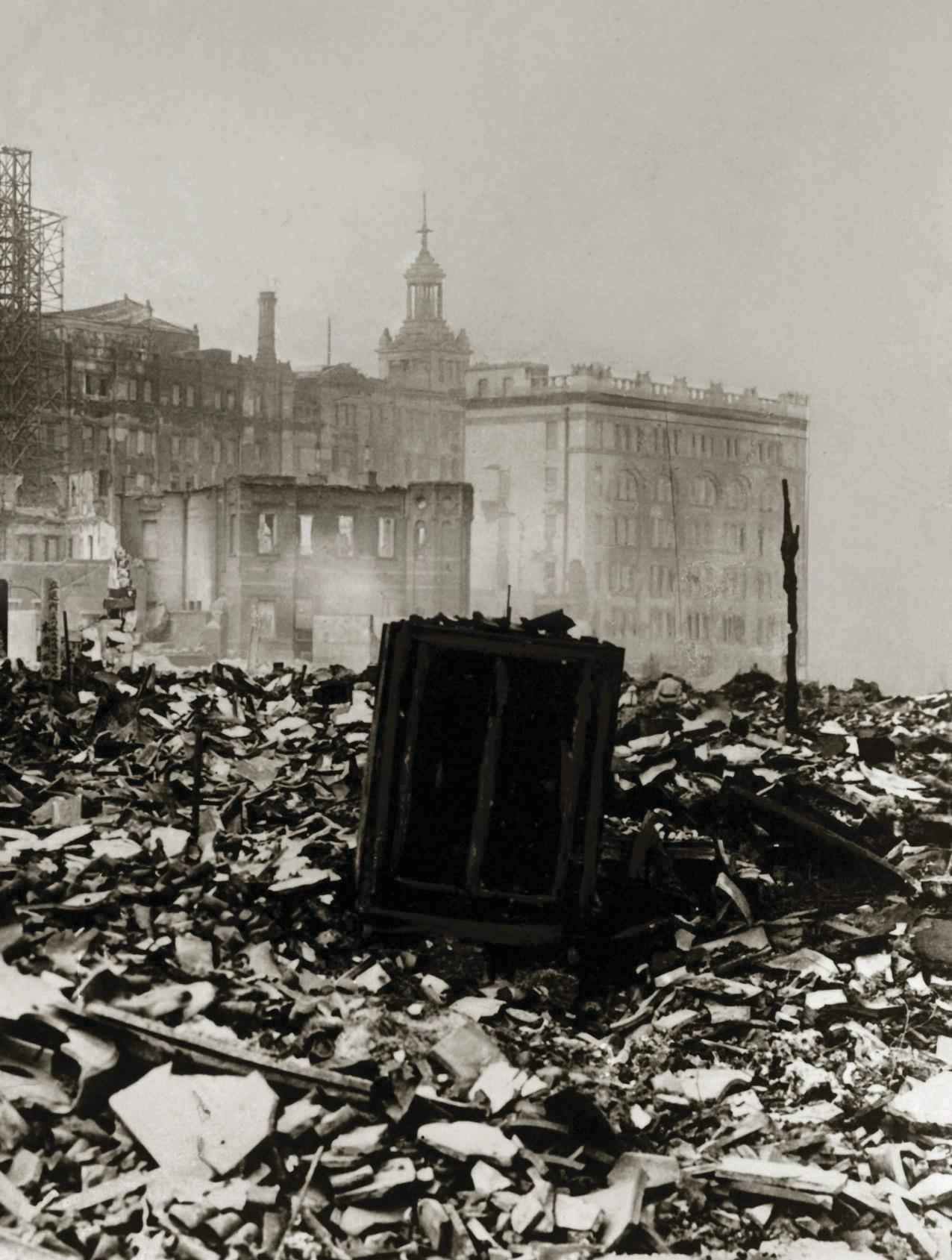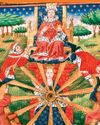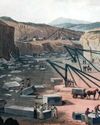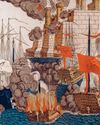TOKYO IN RUINS

Shortly before noon on 1 September 1923, people in Tokyo and the nearby port city of Yokohama felt the ground beneath them shake. It was not especially unnerving: this region of Japan, the Kanto Plain, stood at the meeting point of four tectonic plates. Tremors were common, and usually passed after a few seconds.
On this occasion, though, they continued - for five seconds, then 10- and were so powerful that people were forced to reach out to steady themselves and catch possessions as they fell. After around 15 seconds, sideto-side movement suddenly gave way to something much worse: violent vertical convulsions of such devastating power that they could be felt as far away as Spain in one direction and California in the other.
In past centuries, some in Japan had associated earthquakes with the restive movements of a giant catfish living deep within the Earth. People in Tokyo and Yokohama now gained a visceral, terrifying sense of why that belief might have taken root. The shockwaves caused the ground beneath their feet to undulate. Objects did not just fall- they jumped off the floor, accompanied by an angry, ominous rumble that was soon drowned out by the noise of brick and concrete buildings collapsing, tiles crashing from roofs and people shouting and screaming.
The cacophony briefly gave way to an eerie quiet as people took in what had happened. Stepping out of homes or shops to survey the landscape around them, they began to think of relatives and friends and the need to escape. As the first of many hundreds of aftershocks arrived, the streets of Tokyo filled with people trying to flee to the countryside. The prospect of further tremors to come was worrying enough; far worse was the peril that some could already smell on the air: fire.
Revitalised nation
この記事は BBC History UK の September 2023 版に掲載されています。
7 日間の Magzter GOLD 無料トライアルを開始して、何千もの厳選されたプレミアム ストーリー、9,500 以上の雑誌や新聞にアクセスしてください。
すでに購読者です ? サインイン
この記事は BBC History UK の September 2023 版に掲載されています。
7 日間の Magzter GOLD 無料トライアルを開始して、何千もの厳選されたプレミアム ストーリー、9,500 以上の雑誌や新聞にアクセスしてください。
すでに購読者です? サインイン

Clash of tastes
SUZANNE FAGENCE COOPER enjoys an account of the clash between Victorian art’s chief critic and its enfant terrible

Britain goes global
LAUREN WORKING applauds a kaleidoscopic exploration of how James VI & I fuelled Britain's global ambitions, paving the way for the future empire

"Edward III perpetrated one of the most brutal acts of war committed during the Middle Ages"
HELEN CARR speaks to Emily Briffett about the royal power struggles, bloody wars and horrific diseases that ruptured the structure of English society in the 14th century.

Rock of ages
Dartmoor's granite tors aren't just adventure playgrounds for hikers and climbers - the stone they produced built major landmarks and supported local livelihoods. CLARE HARGREAVES climbs the most famous outcrop

Swings and Roundabouts
We all have childhood memories of playgrounds. But what does the evolution of outdoor play in Britain tell us about the experience of being young over the past 200 years? Jon Winder serves up a history of sandpits, bombsites and battles with cars

Nation-building
This provocative book challenges established interpretations, conceptualisations and evaluations surrounding the birth of the modern Greek nation-state in 1830.
Mother tongue
The title of Laura Spinney's lively, well-illustrated book refers to Proto-Indo-European (PIE).

"Freedom and democracy are not to be taken for granted"
To celebrate the 80th anniversary of VE Day, on 5 May prime minister SIR KEIR STARMER hosted a tea party in Downing Street for Second World War veterans, schoolchildren and people with links to the armed forces. Following the event, he spoke to our correspondent York Membery about why marking the anniversary is so important - and the resonances with the current war in Ukraine

ELIZABETH I'S FORBIDDEN LOVE
In 1579, the queen embarked on a romance with a French duke she affectionately dubbed her “frog”. The pair seemed destined for marriage. Yet, writes Elizabeth Tunstall, the people of England had other ideas...

Beach warriors
SAUL DAVID is enthralled by a detailed account of the Allied assault on Sword beach during the pivotal landings of June 1944
